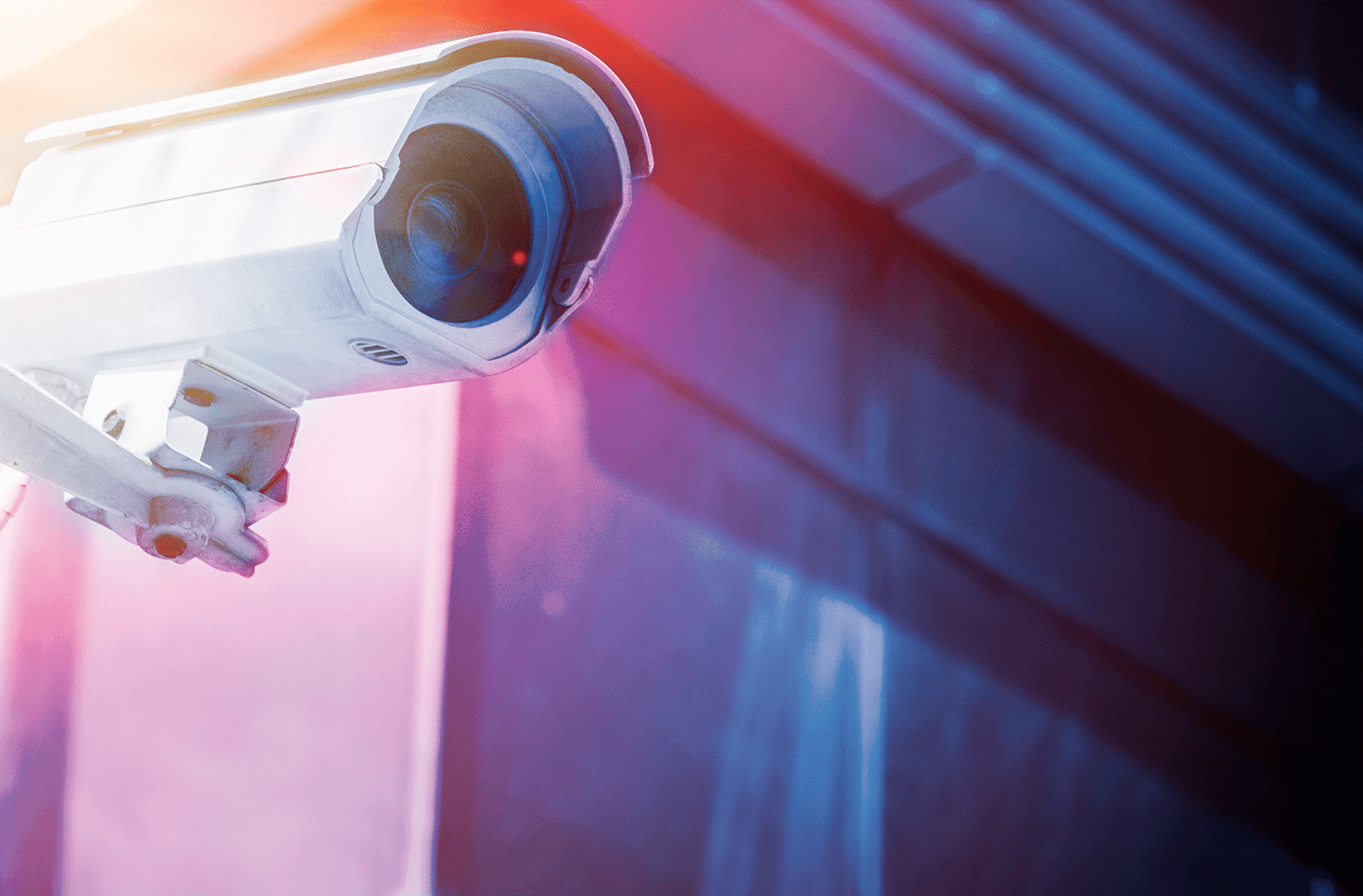Infrared spotlights are valuable tools to improve the quality of video surveillance recordings at night. In this guide you will learn how you can equip surveillance cameras with additional infrared emitters and what you need to know for correct use.
Advantages of infrared headlights
Night recordings with digital surveillance cameras generally require external light sources. While halogen headlights were still used at the beginning of surveillance camera technology, their use is now outdated due to extreme illumination and the resulting disturbed neighborhoods.
Over the years, infrared technology has been so sophisticated that nowadays infrared LEDs can be used to illuminate the area to be monitored. Infrared light in the wavelength range of 850 nm has the advantage that it is not perceived by the human eye. Modern surveillance cameras are almost standard equipped with their own infrared emitters, which, however, are often only of limited performance. For this reason, it makes sense to retrofit your cameras with powerful external infrared spotlights.
Energy supply for infrared spotlights
There are several options for supplying infrared headlights with energy: through Power over Ethernet (PoE), by battery or via the 230 V mains supply can absorb very little power.
PoE
The headlight is supplied with energy via the network cable. In contrast to the normal 230 V mains supply, however, only free wires are used in the cable. According to IEEE 802.3af, this happens up to 57 V with a maximum power of 25.5 W – divided into five classes. Conversely, however, this also means that only headlights with a low output can be supplied via PoE.
Battery Pack
If the installation does not allow for a wired power supply, energy supply via batteries is the logical choice – after all, thanks to modern battery technology, long runtimes can be achieved. Nevertheless, it should not be ignored that the batteries will eventually be used up and need to be replaced. Therefore, the remaining runtime should at least be checked regularly.
230 V mains supply
Due to the low power consumption, all available power classes can be operated cost-effectively with constant energy supply monitoring. For this reason, the mains supply is in most cases the ideal energy supply for infrared headlights.
Choosing the infrared spotlight: when is the investment worthwhile?
The two most common areas of application for camera surveillance with infrared spotlights today are surveillance of one’s own property and observation of animals at night. However, there are some technical parameters to consider when choosing the right headlight.If the headlight is to be used outdoors, the selected product must be weatherproof. The LED headlights from Synergy (SYN LED-TOM00022, EMT S15PWPOE+, SYN LED-TOM01022, EMT S15PWPOE+, SYN LED-TOM00210) have the necessary protection class IP65. In addition, it must be clarified before the installation which operating voltage and electrical power are required and what the perfect beam angle is. If you also want the infrared heater to have a larger detection area, its bracket should be flexible. Furthermore, the correct beam angle must be ensured. Ultimately, the illuminated objects are of decisive relevance: If there are highly reflective surfaces (glass, metal, etc.) in the monitored area, a lower light output should be used to avoid self-dazzling of the camera. In contrast, the light output should be increased if there are many dark objects such as meadows or trees in the monitored area.
Attention: High electrical output does not necessarily result in high light output – the built-in LEDs and the design of the headlamp also influence the output. You should also be aware that infrared technology only creates black and white images. In addition, the emitter must work in the same light wave range as the camera – as I said, primarily 850 nm.
This is how you ensure energy-saving operation
In order not to leave the spotlight running all night or to have to switch it on every time the camera should record something, it is worth installing a motion detector ( PIR sensor) to think about. Although the headlight then reacts somewhat delayed and it may be that the camera has already started to record, continuous operation of the headlight can be avoided in this way. Set the camera to multiple shots instead of single image mode and you won’t miss any movement. If your camera also has a switching input and your PIR sensor has two potential-free switching contacts, you can connect the sensor to the infrared emitter as well as to the camera and thus switch both on at the same time.Construction and commissioning of the infrared heater
If the surveillance camera is retrofitted with an external infrared headlight, it should not be installed next to or opposite the camera, but in a vertical axis to the camera. Otherwise one accepts that the spotlight will blind the camera and make the images unrecognizable.
Once you have clarified the question of the energy supply, you must also ensure that the camera, PIR sensor and infrared emitter are set to the same detection area and the same response sensitivity. A few test images are often necessary for this.
In order to avoid that the camera is triggered by every small animal, special PIR sensors are required. However, if you want to see everything that happens in your garden at night, you can do without it.
It is also often advisable to protect the camera and headlights from the elements, such as excessive sunlight and rain, with a small roof over the devices. However, it must be taken into account that the roofing should not interfere with the detection area. In addition, many high-quality infrared headlights are already equipped with weather protection.
Caution: For legal reasons, avoid in any case that you capture the public traffic area or a neighboring property with a camera and spotlights. Only your own property can be seen.
Once the infrared spotlight has been installed, you will quickly find that the quality of the night photos has improved a lot. Enjoy your pictures.
Image: AdobeStock 76547686














